#norwegian tales
Text
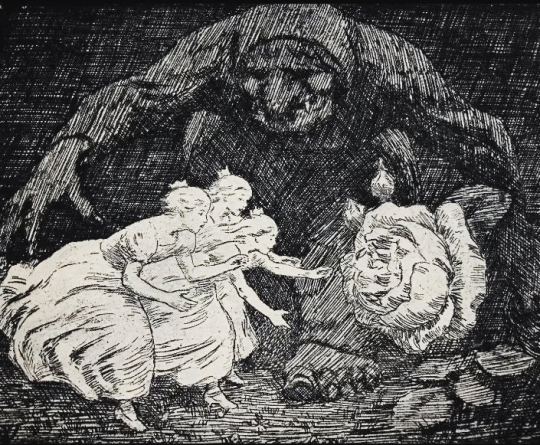
'Troll Witch and Three Princesses' by Eric Werenskiold, 1910
611 notes
·
View notes
Text
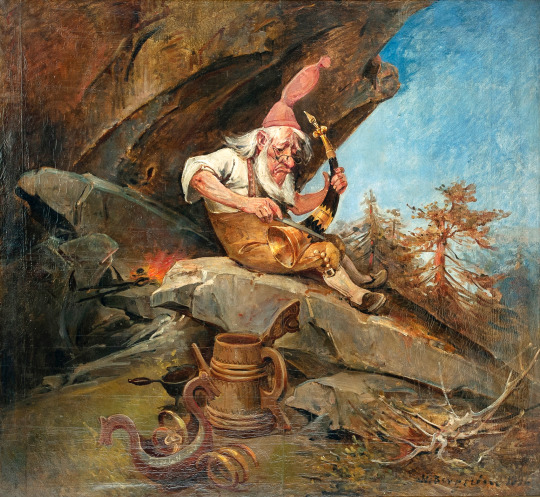
Hornsmeden by Nils Bergslien
#nils bergslien#art#hornsmeden#norway#norwegian#smith#horn#horns#scandinavia#scandinavian#nisse#folklore#fairy tales#landscape#europe#european#nordic#northern europe#norse#romantic#legends#mountains#mountain#forge#mythological creature#mythology#mythological#christmas
60 notes
·
View notes
Text

The Red Fairy Book edited by Andrew Lang
1901
Artist : Henry Justice Ford
“Kari Woodengown”
#the red fairy book#andrew lang#henry j. ford#henry justice ford#1901#kari woodengown#norwegian folk tale#folklore
416 notes
·
View notes
Text
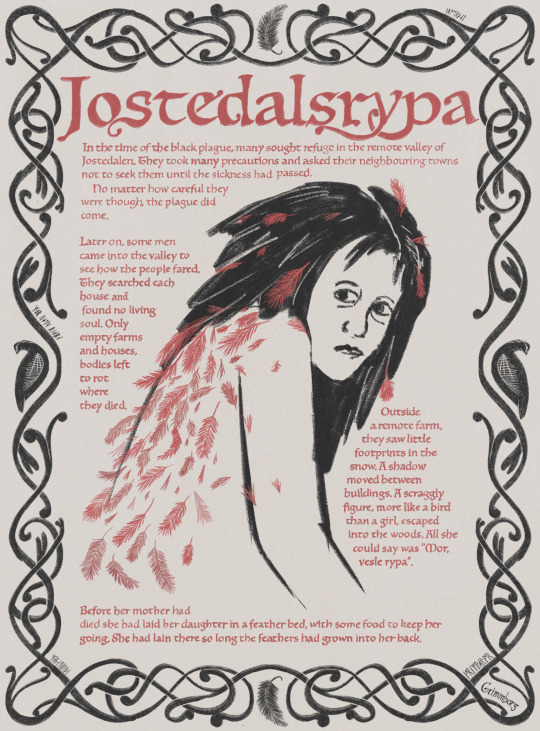
Jostedalsrypa
or The Grouse of Jostedal
As a child obsessed with the plague and disease, Jostedalsrypa was always one of my favourite tales. The utter devastation of society, as well as a girl turned wild bird, really caught my imagination.
Although the real Jostedal was not wiped out during the Black Death, Norway as a whole was devastated. Many towns and farms were entirely abandoned, and some farms remained empty for around 300 years.
In the time of the black plague, many sought refuge in the remote valley of Jostedalen. They took many precautions and asked their neighbouring towns not to seek them until the sickness had passed. No matter how careful they were though, the plague did come.
Later on, some men came into the valley to see how the people fared. They searched each house and
found no living soul. Only empty farms and houses, bodies left to rot where they died.
Outside a remote farm, they saw little footprints in the snow. A shadow moved between buildings. A scraggly figure, more like a bird than a girl, escaped into the woods. All she could say was "Mor, vesle rypa".
Before her mother had died she had laid her daughter in a feather bed, with some food to keep her going. She had lain there so long the feathers had grown into her back.
#black death#jostedalsrypa#plague#middle ages#fairy tale#my art#runes#norwegian history#can the name rjupa/rypa please make a comeback#also yes i left out the ending bc thats just family legend building and idc about that lol#ptarmigan#grouse
14 notes
·
View notes
Text

Welcome to the Bøyg. Because he could not kill the Bøyg, Per Gynt eventually managed to escape the Bøyg by (with the aid of his dogs) pulling the Bøyg outside of the hut it was surrounding, after which the Bøyg left.
#BriefBestiary#bestiary#digital art#fantasy#folklore#legend#fairy tale#per gynt#peer gynt#the bøyg#bøyg#the great bøyg of etnedal#great bøyg of etnedal#bøygen#norwegian folklore#norwegian fairy tale#troll#monster
21 notes
·
View notes
Text

EAST O’ THE SUN & WEST O’ THE MOON by Peter Christen Asbjørnsenre and Jørgen Engebretsen Moe. (Philadelphia: McKay, c.1921). Illustrated by George Webbe Dasent.
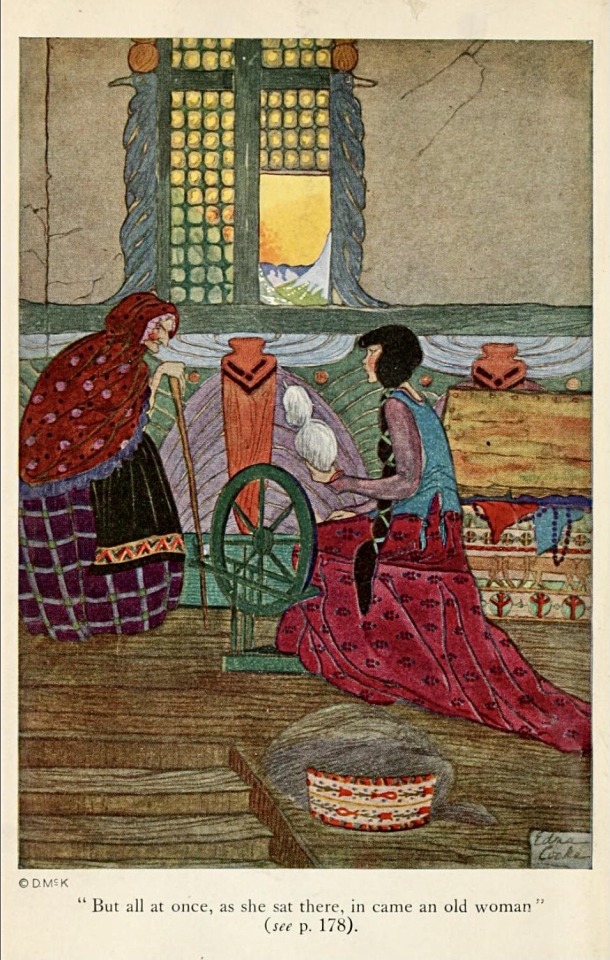
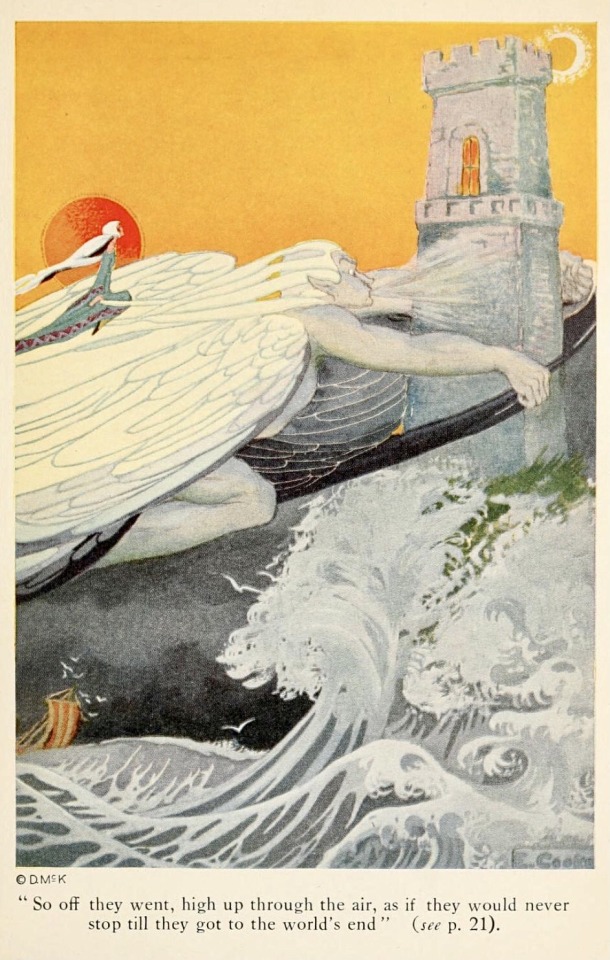
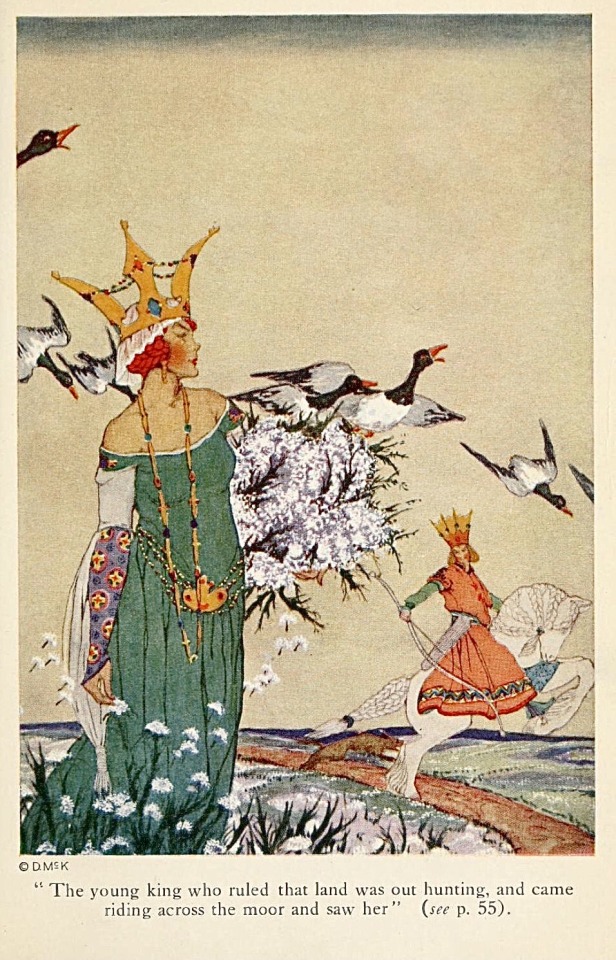
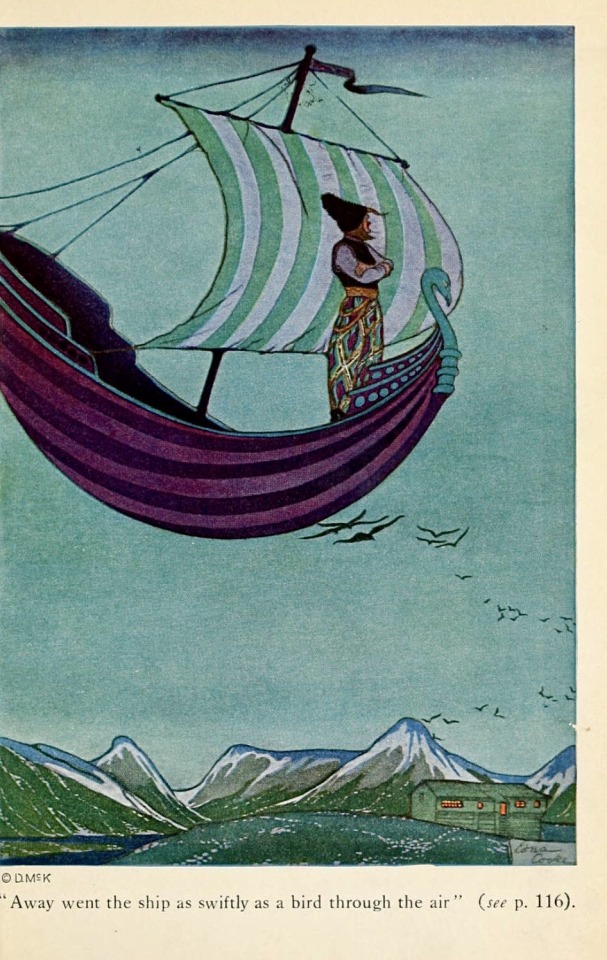
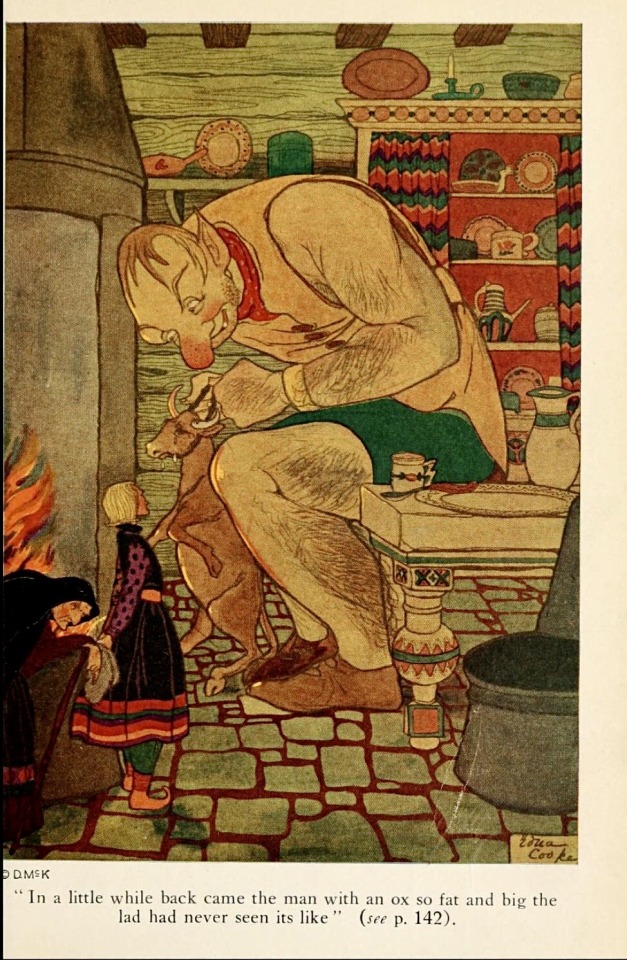
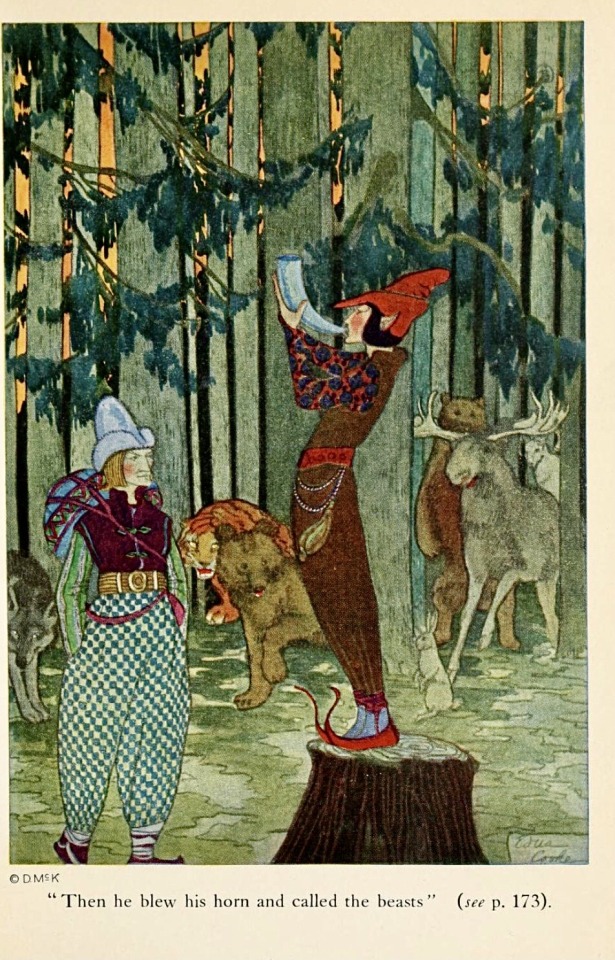

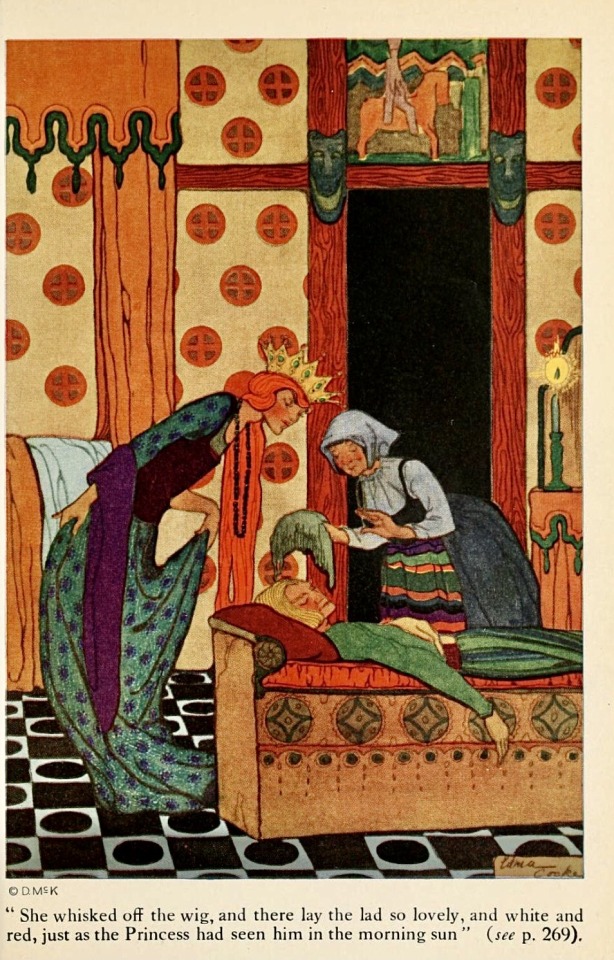
source
#beautiful books#book blog#books books books#book cover#books#illustrated book#vintage books#children’s book#norse mythology#norwegian#east of the sun west of the moon#fairy tales
158 notes
·
View notes
Text




#ok while parts were cheesy/cringy there was a lot that i liked about these movies#norwegian fairy tales for one#a fairy tale where the couple *does* end up together but not right away for another#the 3rd/youngest child trope which isn't popular in film adaptations#but i really really liked this part right here#ash lad#ash lad: in search of the golden castle#askeladden#askeladden: i soria moria slott#soria moria castle#faith
8 notes
·
View notes
Text
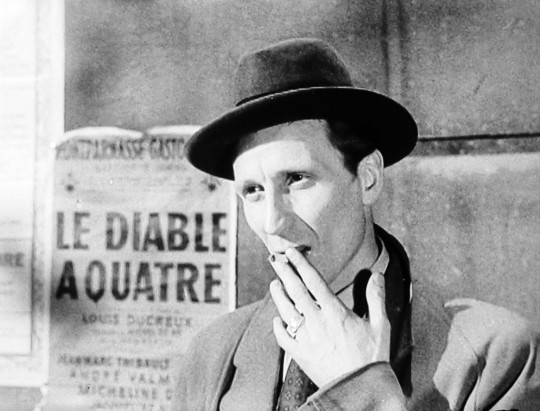
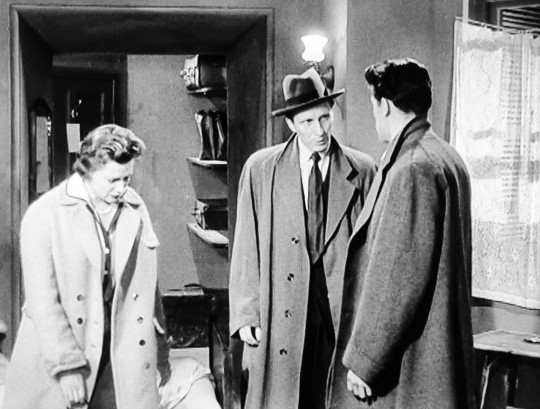


Alfred Burke puts on his best policing face as Parisian detective Inspector Maron, in Overseas Press Club - Exclusive!: The Billion Franc Mystery (1.6, ABPC, 1957)
#fave spotting#alfred burke#overseas press club exclusive!#the billion franc mystery#1957#classic tv#public eye#abpc#an obscure series‚ even by the standards of pre 1960s telly. OSPC was a coproduction between Ardleigh Films and Associated British Pathé#(they of the famous news reels‚ and themselves a subsidiary of Associated British Picture Corporation). a year or two later and this#would probably have been made in house by ABC themselves‚ but the franchise was only a year old at this point and still finding its feet#the concept is simple but promising: each week‚ a member of the Overseas Press Club of America (a real and still extant organisation) tells#a tale from their careers‚ an unusual instance or shocking event that makes for good tv. these tales are true! says the narrator in the#show's opening moments‚ and these ppl exist! frankly that's something i take with a large grain of salt; whilst some stories certainly have#direct factual origins (there's an episode about a catholic priest going undercover with a gang of street toughs which ends with footage of#the actual figure that inspired the ep) but others are highly questionable (the first‚ about a Norwegian resistance fighter who has plastic#surgery and takes the place of a relatively high ranking nazi officer; i feel like that's something that would be better known‚ yknow??)#this ep is about a nazi plot to destabilise the French franc just prior to ww2; quite believable and certainly the nazis did dabble in#producing counterfeit money‚ tho the examples i found online all relate to pound sterling or latterly the us dollar‚ not the franc)#our journalist of the week is played by Lee Patterson‚ a minor film star in british b movies at this point‚ with swooningly handsome Anton#Diffring (who had fled nazi persecution himself) as the villain. Alfie's part is pretty small‚ he's just the french cop keeping every one#in sight and letting events play out (cue some wonderful Alfie cheshire cat grins). Patterson (and maybe Diffring) got to fly out to actual#real Paris to film some location work and establishing shots (a benefit of making a series about the OSPC was that they arranged flights#for cast and crew). poor Alf didn't get a holiday tho; his scenes are conspicuously studio based‚ even when he's meant to be on the banks#of the Seine...#so yes‚ a fun little series‚ even if (so far) the wide scope of potential stories does seem to favour ww2 stuff. good luck finding a copy#tho; it took me months of trawling to find a reasonably priced 2nd hand copy (Amazon currently have a copy for £79.99 which.. for 2 discs#is kind of insane). a victim of the price gouging which seems to have affected some of the lesser known network titles since their#dissolution. sad times for the fan of painfully obscure old tv.. if I ever learn how to make things be on a computer‚ tho‚ I'll happily#share
7 notes
·
View notes
Text

EverAfter Slaughter 06: Farmer Weathersky
Once upon a time there was a farmer who harvested cadavers and sowed carrion birds, who molded his own flesh to catch his prey.
#everafter slaughter#farmer weathersky#farmer weatherbeard#mage#Peter Christen Asbjørnsen#Peter Christen Asbjornsen#Jørgen Moe#Jorgen Moe#Norwegian Folktales#fairy tale#dark fairy tale#slasher#horror#horror art#ink#ink drawing#monster#monster design#character#character design#art#artists on tumblr
7 notes
·
View notes
Text

Inktober day 3
decided to draw something from Norwegian/Scandinavian folklore today, so have a drawing of the Hulder. Usually described as looking like a beautiful woman from the front, but on her back is "missing" and she has a cowtail. Usually lure men to their death in the woods
#inktober#inktober 2022#hulder#huldra#norwegian folklore#scandinavian folklore#folklore#fairy tale art#fantasy#dark fantasy#original art#traditional illustration#traditional art#ink#marker#markers#tw body horror
82 notes
·
View notes
Photo

'Askeladden' by Theodor Kittelsen (1857 - 1914)
334 notes
·
View notes
Text
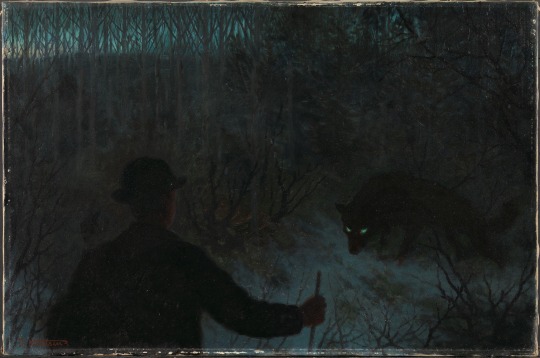
The Ash Lad and the Wolf by Theodor Kittelsen
#theodor kittelsen#art#askeladden#the ash lad#wolf#norway#norwegian#folklore#folktales#scandinavian#scandinavia#europe#european#wolves#folk tales#nordic
252 notes
·
View notes
Text

Louis Moe (April 20, 1857 - 1945) was born in Norway, but settled in Copenhagen after training there at the Royal Academy. He was a prolific illustrator of fairy tales, children's books and Norse chronicles.
Above: Evening in Greenland with hunters and dogs, no year - gouache (Privately owned)
#art#norwegian artist#danish-norwegian artist#book illustration#the edda#saxo grammaticus#gouache#greenland#dog sledding#danish royal academy of fine arts#1890s#fairy tales
19 notes
·
View notes
Text
Fables: The Ultimate Catalogue! (A)
Here it is! A complete list of all the fairytale, nursery rhyme, mythical and literary references in Fables, both the main comic book series and its various spin-offs! This “catalogue” was created by me looking throughout the series and collected editions, adding to my personal knowledge quick Internet researches, and completing it all with the Fables Encyclopedia (which despite its official status has several things wrong in it). I didn’t get absolutely everything - some references I did not get, but I will keep a separate post for them. Enjoy!
SPOILERS AHEAD, SPOILERS AHEAD!
This post will cover the issues of Fables, the main series, 1 to 59 (from “Legends in Exile” to “Burning Questions”) + A Wolf in the Fold story + The Last Castle one-shot + 1001 Nights of Snowfall
Note that I might have missed a few references, which I have placed in my series of posts “Searching for the reference” - if I ever find additional things, I will update this post.
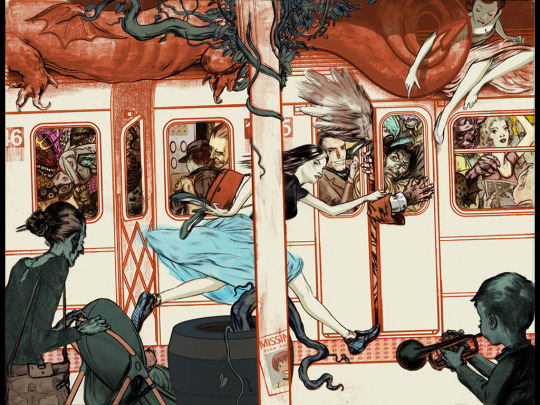
The main characters
# Snow-White: The princess from “Little Snow-White” by the brothers Grimm, but also the sister of Rose-Red, from “Snow-White and Rose-Red” by the same brothers. She is the “civilized child”, “good sister”, “refined princess”, “order” to Rose-Red’s “wild child”, “disobedient sister”, “crude peasant”, “chaos”.
# Rose-Red: The character from the brothers Grimm fairytale “Snow-White and Rose-Red”. She is Snow-White’s counterpart in many way. She is the peasant girl to her sister’s princess, she is the wild child to her sister’s obedient/civilized child, she is the ruler of the Farm and its animalistic realms where Snow-White governs Fabletown and the human Fables.
# Bigby Wolf: The Big Bad Wolf. An “archetypal” character representing the “Western myth of the wolf as a voracious killer, man-eating, cunning, terrifying beast” - even tough real-life wolves are actually shy and do not attack men in normal circumstances He was the wolf from “Little Red Riding Hood” and from “The Three Little Pigs”. His original fairytale incarnation, as the giant, all-devouring wolf-son of the North Wind, was revealed by Willingham to have been inspired by the Fenris Wolf of Norse mythology (Willingham wanted his depictions of fairytales to have roots in ancient myths, the same way the “oldest Sleeping Beauty is Brunhilde’s circle of fire”. His human persona in today’s Fabletown is inspired by a bunch of detective and spy characters - most notably by the detectives of the “film noir” genre, though he has a disheveled Columbo-like appearance, coupled with a gruffness and inherent violence typical of a “wolf” like character: he has been described by people as “Dirty Harry meets Wolverine meets Humphrey Bogart’s detective roles”. His position as the love interest to the main female protagonist/Snow White-related woman is also clearly inspired by the character of “Wolf”, from “The 10th Kingdom”.
During his adventures in World War II he happened to become Fables’ equivalent of “The Wolf-Man” from the Universal Horror movies (he even lived through “Frankenstein meets the Wolf-Man” as he had to fight the creature of Frankenstein - Willingham confessed being a big fan of the Universal classics). In fact, we know he was the main source of the werewolf myth in our world (or maybe the reverse, it is unclear with Fables), since he is a shapeshifter able to turn into a giant wolf, a human being, or an in-between, he can only be killed by silver, and he had a friendship and alliance with Count Dracula (see below). We also learn from his backstory in “1001 Nights of Snowfall” that he used to be a twisted version of the “ugly little duckling” of his family, the runt of the litter mocked by his brothers, then turned into the biggest, baddest, most powerful of magical wolves.
# Boy Blue: Snow-White’s assistant comes from the nursery rhyme “Little Boy Blue”. On a play of him being tied to the color blue and playing the trumpet, he is also a talented musician of blues music. Also an expert in jazz, his favorite song is “Blue Skies”, and he apparently will always refuse to play “Tijuana Taxi”. When describing his tragic love story with Little Red Riding Hood, he calls it a parody of an “insipid O. Henry tale”. His adventures in the Homelands, with a mask on his face, the Witching Cloak and the Vorpal Blade, turned him into a legendary figure mixing various influences - his mask, cape and sword evokes the character of Zorro, he calls himself at one point the “Blue Avenger” (which seems to be a comic book nod, as Boy Blue is seen to be a big fan of comics), and he is called by many the “Black Knight” which, on top of being a reference to the archetype of the “Black Knight/Dark Knight” in typical Arthurian tales, might be a reference to Batman aka the “Dark Knight”, another dark super-hero with a half-mask and cloak that fights in the shadows of the night. Rose Red later describes this new persona of his as “the swashbuckler supreme”, “better than Errol Flynn” (the actor who played the most famous cinematic version of Robin Hood).
# Jack: Of his full title “Jack of all Tales” (a pun on “Jack of all trades”). Jack is ALL the Jack of fairytales, or almost all of them. He starts out as the Jack from the English Jack tales (Jack and the Beanstalk, Jack the Giant Killer, Jack o’ Lantern) but he is also promptly revealed to be the Jack from nursery rhymes (Jack be nimble, Little Jack Horner, Jack and Jill). He is also the “Appalachian Jack”, or the “Mountain Jack of American folklore” - the Jack of those folktales carried from Europe over to the Appalachian mountains (the issue “Bag O’Bones” is a retelling of the Appalachian story “Soldier Jack” or “The Man who Caught Death in a Bag”). AND he is tied to the “Jacks” of card-games, aka the four Knaves, that he can summon in his hand during any card game (he even sings the gambling song “Jack O’Diamonds”). The Fables Encyclopedia notes that the oldest Jack tale would be “Jack and his Stepdame”, and mentions how Jack is the English version of the stock-character of fairytale known as Ivan un Russia, Hans in Germany and Juan in Spanish-speaking American countries. Willingham also mentions in the Encyclopedia that “Jack who jumped over a candlestick” is another one of the nursery rhymes part of the character.
Jack is one of the tricksters of the Fables world - though he represents the “dark gray” kind of trickster. He is a chronical liar and thief, always acting out of selfishness and base desires (greed and lust), constantly throwing himself into “get-rich-quick” plans and not truly caring about anyone else but himself. This anti-hero is also constantly stuck into a cycle of failures and successes: while by essence he has luck on his side, as he is the very embodiment of the “designated hero” or the “non-heroic protagonist”, chance alway provides him the opportunities to fulfill his dreams and to escape his ordeals, his character however also means that every time he puts together a succesful scam or gets where he wants, he will lose everything and be forced to begin everything from scratch again. The Fables Encyclopedia does point out that this isn’t part of the traditional Jack character, who is usually an “unlikely hero”, the simpleton or the weakest of three brothers, who, with courage and resourcefulness (and luck) overcomes obstacles. But Willingham explained he wanted a “trickster without the charm, a bad boy who never learns despite his frequent comeuppance”. The only Jacks that aren’t him are Jack Sprat (from the nursery rhyme) and Jack Ketch (the executioner).
# The Black Forest Witch, or Frau Totenkinder: She is introduced as the witch from “Hansel and Gretel”, who survived being burned in her own oven, but she is revealed by “The March of the Wooden Soldiers” to have been in truth much more than that. She is an “archetypal” character who was the anonymous, unnamed or barely-mentioned witch of numerous other fairytales - and she even was involved in several stories where she did not appear as a character, since her desire was to keep herself hidden from the world. Her two titles are mere aliases: “The Black Forest Witch” refers to the deep, dark forest she lived in, the Black Forest of actual Germany, and the type of cake “Black Forest” all at once. Frau Totenkinder is a German name meaning “Miss Child-Killer”, formed of “Toten”, to kill, and “kinder”, “children”. In general, I also suspect she was influenced by the character of the Witch from “Into the Woods” (notably for reasons we will see in later parts of the series).
We get her full backstory in “The Witch’s Tale” (1001 Nights of Snowfall) and we learn she has been the witch from Rapunzel (though this version of Rapunzel is quite different from the one we know) and the witch who cursed the Frog Prince and the Beast into their monstrous shapes (it was a hobby of her to turn handsome, rich noblemen into various animals under the pretense of “helping” them finding their “true love”). She also participated in the creation of famous stories/characters, though she never appeared in them: she blessed Lancelot of the Lake with the ability to win any combat as long as he remained pure of heart, she created the Three Billy Goats Gruff to get rid of a bridge infested by trolls, and she gave the Pied Piper his enchanted flute to lure the children of Hamelin away as a personal revenge on the town. She played the role of an haruspex in a city similar in design to Ancient Rome (before, she was a shaman for a Prehistoric tribe), though the prophecy she delivers through her gore-reading are biblical in nature (Joseph’s famous “seven years of plenty, seven years of famine”). And finally we learned that she caused one of the “good daughter rewarded, bad daughter punished” type of fairytale, in the likes of “Diamonds and Toads” or “Frau Holle” - except her “punishment” was killing the vain, mean sisters, cooking them into pies and feeding them to their mother.
# Beauty and the Beast: A couple from the fairytale of the same name, first written by madame de Villeneuve, but rewritten and made famous by madame Leprince de Beaumont.
# Prince Charming: THE Prince Charming of various fairytales. He isn’t all the princes of fairytales, but he was (in chronological order), the prince-husband of Snow-White, who after his divorce with her became the prince-husband of Briar Rose, and after his divorce with her became the prince-husband of Cinderella. His womanizing ways lead him to be compared to the famous Casanova (though his modern behavior evokes mostly a nicer Don Giovani). I suspect he was inspired by the characters of the prince brothers from “Into the Woods”. He also technically makes an homage to the character of Harold Hill from “The Music Man”, as he uses some sentences from his song “Ya got trouble” during his campaign for mayor of Fabletown.

Fabletown citizens and buildings
# King Cole: The mayor of Fabletown is Old King Cole, from the nursery rhyme of the same name.
# Bluebeard: From Charles Perrault’s “Bluebeard” fairytale.
# Trusty John: He is Faithful John, from the same name fairytale of the brothers Grimm.
# Ambrose/Flycatcher is the Frog King, from the brothers Grimm fairytale of the same name. He usually sings various folk-songs and nursery rhymes tied to his frog state, such as “Frog Went A-Courting” and “The old lady who swallowed a fly”. Due to him being not pretty-looking, not very bright or intelligent, and usually dismissed and pushed into lower positions, he is also explicitely referred to in the story as “the village’s idiot” of Fabletown. The reason Willingham chose “Ambrose” as his name is revealed in the Fables Encyclopedia to be: Willingham simply likes the name Ambrose ever since he discovered that Merlin the wizard was sometimes called “Merlin Ambrosius”. (In fact, Willingham, by choosing this name, indirectly predicted Flycatcher’s future Arthurian character-arc).
# Grimble, the troll security guard, is one of the several bridge trolls of “The Three Billy Goats Gruff”. I say several because, when Buckingham drew the “Animal Farm” arc, he kept putting in the background an orange-fur covered creature with a green hat - the Encyclopedia reveals that it was Buckingham’s reusing another of his designs of the “Bridge Troll”, taken from the “Merv Pumpkinhead” comic series, a spin-off of Neil Gaiman’s “The Sandman” that was the first collaboration of Willingham and Buckingham (Merv Pumpkinhead, Agent of D.R.E.A.M.). (Similarly, in Frau Totenkinder’s backstory she explains that when a bridge troll is killed, another soon takes his place, as they are an entire species). The Encyclopedia also reveals that Willingham originally envisioned Grimble as a big burly security guard, but Lan Medina (one of the artists working on Fables) rather drew him as a “Wally Cox, Barney Fife sort of fellow”, and Willingham adored the dichotomy of the glamour and true character.
# Bufkin is one of the winged monkeys from “The Wonderful Wizard of Oz”, by L. Frank Baum.
# Cinderella is from Charles Perrault’s “Cinderella” (and not the Grimm version since her slippers are here of glass, not gold).It is in fact the name of her shoe-shop: The Glass Slipper.
# Pinocchio is from “The Adventures of Pinocchio” by Carlo Collodi.
# Fabletown itself (and the Fables as a whole) are named after the genre known as “fable”. The Woodland Luxury Apartment, Fabletown’s unofficial town hall, refers in name the typical fairytale forest, and in role the main castle at the center of every fairytale kingdom. In its gardens we find statues of Alice with her kitten and white rabbit (from “Alice in Wonderland” AND “Alice Through the Looking-Glass”) and a statue of Humpty Dumpty (from the nursery rhyme of the same name, plus Alice in Wonderland). (My notes mention a statue of Dorothy and Toto from The Wizard of Oz, but I am not certain of it?)
# The streets of Fabletown are named after various authors. Bullfinch Street is named after Thomas Bullfinch who wrote the famous “Bullfinch’s Mythology”. Kipling Street is named after Rudyard Kipling who created classics such as “The Jungle Book” or the “Just so Stories”. Perrault Street is named after Charles Perrault, who wrote the famous “Mother Goose’s fairy tales”. Andersen Street is named after the fairytale author Hans Christian Andersen.
# The “I Am The Eggman” diner, on top of being a pun due to being owned by Vulco, one of the crow-brothers, is a reference to the lyrics of the song “I am the Walrus” (itself a reference to “Alice through the Looking-Glass”). The Edward Bear’s Candies shop is a reference to the teddy bear that inspired the creation of Winnie-the-Pooh. The Branstock Tavern is a reference to the Barnstokkr tree appearing in the Völsung saga.
# While not part of Fabletown, Gottfried’s Steak House seems to be a reference to Gottfried von Strauss, a poet famous for his work on “Tristan and Yseult”. The waitress there, Molly Greenbaum, serves as a reference to the folk song “Molly Malone”, that Prince Charming actually sings as he leaves her (I also mistook her for a nod the nursery rhyme “Miss Molly had a dolly”).
# The Knights of Malta Hospital is a reference to the real-life Knights of Malta/Knights Hospitaller. Working in it, we find Doctor Swineheart (from the Grimms’ “The Three Army Surgeons”) and Nurse Sprat (actually Miss Sprat from the nursery rhyme “Jack Sprat”). Jack Sprat himself lives with his wife in Fabletown.
# The Forsworn Knight, the undead hanging knight haunting his rusty armor, has his identity secret up to this point - but the “Fables Encyclopedia” explained that his title was a reference to how the knights of the Arthurian mythos are only known by their nicknames: The Knight with Two Swords, the Dolorous Knight, the Green Knight, the Savage Knight...
# Briar Rose is the character from the brothers Grimm’s version of the “Sleeping Beauty” story (though the fact she was blessed by fairies as a baby comes from Perrault’s “Sleeping Beauty”).
# Bluebeard (and then Charming’s) goblin butler, Hobbes, has been identified by several as a nod to Thomas Hobbes. However I think it might rather simply be a reference to the “hobgoblins”.
# The Lewis Antiques shop seems to be a reference to C.S. Lewis, the inventor of Narnia (given it is “antiques”, an old wardrobe comes to mind), though it could be also a nod to Lewis Carroll. Nod’s Books has been identified as a reference to “The Book of Nods” by Jim Carroll. The Chateau d’If Fencing Academy is a reference to the real-life castle made mythical by Dumas’ “The Count of Monte-Cristo”: in fact Edmond Dantès himself runs the Academy. The Web ‘n Muffet Market is a reference to the nursery rhyme “Little Muss Muffet” (she lives now as Mrs. Web, having married the spider Mr. Web). The Yellow Brick Roadhouse is a reference to the Yellow Brick Road of Oz.
# There are two shops seen in the comics but who’s true owners are only revealed later. One is “Ford Laundry” which is a laundromat runned by the Scottish bean nighe, Mrs. Ford (because she is “The Washer-Woman at the Ford”). The second is the Grand Green Florist shop, revealed in “A Wolf Among Us” to be the shop of Auntie Greenleaf, from Schlosser’s “Spooky New-York” anthology.
# The 13th floor witches include (beyond Frau Totenkinder), the “Fairy Witch” or “Great Fairy Witch” (actually the witch from Andersen’s “Thumbelina”) and Mr. Grandours, the sorcerer-king from “The Wizard King” (Willingham took the translated version from Andrew Lang’s Yellow Fairy Book, though the fairytale origin is actually the knight of Mailly “Le Roi Magicien”, in his “Illustres fées” - the Illustrious Fairies of Le Chevalier de Mailly). When evoking Mr. Grandours in the Encyclopedia (which falsely refers to The Wizard King as having been invented by Lang), Willingham also said when designing his character he thought of all the various magical bears in fairy tales, good or wicked - and his human form is meant to evoke a “Leonid Brezhnev-kind of character”.
# Thrushbeard is from “King Thrushbeard”, a fairytale of the brothers Grimm. Mark Buckingham designed him after comic book creator Alan Moore.
# Kay is a character from Andersen’s “The Snow Queen”.
# The boy who cries wolf is from the Aesop fable of the same name (and lives on the seventh floor of the Woodland Luxury).
# Ichabod Crane is a character from Washington Irving’s “The Legend of Sleepy Hollow”. Willingham insists in the Fables Encyclopedia that he wanted to depict Crane as he perceived him when reading the original story, aka as “kind of an ass, of the prickly, pompously self-impressed sort”.
# The Stone Soup restaurant is a reference to the very widespread and famous folktale “The Stone Soup”. The Andersen butcher shop is another nod to Hans Christian Andersen (here mixed with the word “Delicatessen”). The reparation team/company in charge of remaking Fabletown after the March of the Wooden Soldiers is called “N Rhyme” - aka Nursery Rhyme.
# Gudrun is the goose that lays golden eggs - made famous by the “Jack and the beanstalk” fairytale, but finding her roots in one of Aesop’s fables “The goose that laid golden eggs”. As for her name, it is the one of the wife of the Germanic mythical hero Sigurd/Siegfried.
# Barbara Allen, one of the victims of the rogue zephyr, is from the folk-song of the same name, “Bonny Barbara Allen”.
# Mowgli is the main character of Kipling’ “The Jungle Book” (he is also explicitely compared in-universe to “Tarzan” (from “Tarzan of the Apes”), though Willingham in the Encyclopedia explains he prefers Mowgli over the other because he was “Tarzan before Tarzan”.
# Rapunzel is the character from the brothers Grimm story of the same name.
# Fair Katrinelje, Vulco’s part-time girlfriend, is from the brothers Grimm fairytale “Fair Katrinelje and Pif-Paf-Poltrie”.

The Farm residents and buildings
# The Farm plays various roles. In design it is described by Rose-Red as “Old Macdonald meets Walt Disney meets Munchkinland” - Old Macdonald had a farm being a traditional children song (later quoted to describe the Farm), the Disney reference being related to Disney Land the amusement park (the architecture of some buildings has been noted to be similar to the Neuschwanstein castle, which inspired Sleeping Beauty’s castle for Disney) , and Munchkinland being a reference to the colorful landscape of the MGM movie “The Wizard of Oz”. In terms of role it also fulfills the idea of the “farm” where pets are supposedly sent when they die and parents want to hide it to their children. In its first appearance, the “Animal Farm” arc, it plays the role of the titular “Animal Farm” from George Orwell’s book of the same name, and Goldilocks purposefully makes a gory reference to William Golding’s “Lord of the Flies”, comparing the Farm to the island of the story.
# Colin, Posey and Dun are the three pigs from “The Three Little Pigs” (Posey and Dun coupling as the pigs from Orwell’s “Animal Farm”). They are later replaced by three giant brothers turned into pigs, Johnny, Donny and Lonny. The giant brothers notably recite the iconic lines “Fee fi fo fum [...] I’ll grind his bones to make my bread!”, coming from “Jack and the Beanstalk”.
# The Farm hosts the Rhinoceros from “How the Rhinoceros got his skin” (Kipling’s “Just So Stories”), the Three Billy Goats Gruff (from the Norwegian fairytale of the same name), Henny Penny (from “Chicken Little/Henny Penny”), the Owl and the Pussycat (from the poem of the same name), the Hare and the Tortoise (from the Aesop fable of the same name), several flying monkeys (from “The Wonderful Wizard of Oz”), a red-cap (from English-Scottish folklore), and Puss in Boots (from Perrault’s fairytale of the same name).
# The buildings of the Farm include a pumpkin-house similar to the one of Jack Pumpkinhead in the “Oz” books ; mushroom-houses taken straight out of the “Smurfs” comic books and cartoons; the shoe-house of the “Old Woman who lived in a Shoe”, as well as Baba-Yaga’s chicken-legged house.
# Goldilocks and the Three Bears (Papa Bear, Mama Bear and Boo Bear) are from the fairytale of the same name.
# Weyland Smith, the original caretaker of the Farm before Rose-Red, is a character from Germanic legends, Anglo-Saxon folklore and Nordic sagas, present “from the Poetic Edda to Beowulf” to take back the words of the Encyclopedia.
# The B’rer Fables are animal fables taken out of Afro-American folktales (most famous through the “Uncle Remus” books): we have B’rer Rabbit, B’rer Bear, B’rer Gator. In “Sons of the Empire” we also find out B’rer Wolf is here.
# The “Jungle Fables” or “Kipling Fables” are characters of Kipling’s The Jungle Book: Shere Kan the tiger, Bagherra the panther, Kaa the python, and Old King Louie (the latter was a mistake of Willingham who forgot King Louie was a character invented by Disney and not from the original story). We later learn Baloo the bear is also at the Farm.
# The Farm hosts several characters briefly caricatured in the background to avoid the copyright of Disney, such as Winnie the Pooh and Piglet, or Bambi.
# All the birds of the nursery rhyme “The Death and Burial of Cock Robin” are present in the Farm - since the events of the nursery rhyme are enacted in “Animal Farm”. Cock Robin itself is actually a Fabletown bird - and the Fables Encyclopedia notes that he is actually the protagonist of a whole cycle of nursery rhymes, including “Cock Robin got up Early”.
# The Farm hosts various characters from “Le Roman de Renart”, “The History of Reynart”, the Reynart stories of medieval France. Reynard the Fox and Noble the Lion are the most noticeable one, but we also see Brun the Bear in the Farm (identified by Buckingham’s sketch-notes). Ysengrim the wolf also appears in “Sons of the Empire”. Reynard the fox is here notably much more pleasant and amiable than his medieval counterpart - in “Fables Encyclopedia”, Willingham explained that the first trickster of his childhoo was Bugs Bunny, a “monster of chaos”, and that for Reynard he wanted to create a “slyer, wiser and more subtle” form of trickster.
# The Farm has numerous nursery rhymes characters. From “Hickory Dickory Dock” we have the mouse that ran down the clock. From “Hey Diddle Diddle” we have the cow who jumped over the moon, the dish and the spoon (plus in King Cole’s “Fair Share” backstory we learn there’s also the Little Dog who Laughed). We also have the Three Blind Mice (from the nursery rhyme of the same name). As well as “Mr. Sunflower”, from a nursery rhyme by R. André.
# Three characters from “The Wind in the Willows” are here: Mr. Toad, Mr. Mole and Mr. Badger.
# Numerous small-sized humanoids live in the Farm: Tomb Thumb (an archetypal character of English fairytales), Thumbelina (from the fairytale of Andersen of the same name) and a community of Lilliputians (from Swift’s “The Travels of Gulliver”). The Lilliputians have created a “mounted police” riding “field mice” (which I believe to be some of the field mice from “The Wonderful Wizard of Oz”). In the Fables Encyclopedia, it is noted that the idea of the Mounted Police of Lilliputians, of tiny sergents riding on mice to do cop duty, actually comes from the song “And the Mouse Police never sleeps” from Jethro Thull’s “Heavy Horses” (even though the original song referred to a cat).
# Several characters of the Alice books can be found here, most notably living playing cards, the Cheshire Cat (from “Alice in Wonderland”) and the Walrus (from “Alice Through the Looking-Glass”).
# When the rebels have to be executed, the one called for the job is Jack Ketch, a historical figure turned “archetype/stereotype/common nickname” for executioners in England. He is also revealed to have been the executioner of Prince Charming’s realm, and the Fables Encyclopedia has Willingham explaining that, for him, Jack Ketch isn’t actually a citizen of Fabletown but rather the name given to whoever takes the role of the executioner of the Fables community - it is a job, a position.
# John Barleycorn is from the folk-song of the same name.
# Mary and her little lamb are from the nursery rhyme “Mary had a little lamb”, while Miss Mousey and her frogs are from the folk-song “Frog Went-A Courting”.
# Peter Cottontail is present at the farm - “Cottontail” being the alternate name of the famous character known as “Peter Rabbit”. And while Peter Rabbit is most famous by Beatrix Potter’s writings, the character’s alias of “Peter Cottontail” comes from the novels of Thornton Burgess, such as “Old Mother West Wind” or “The Adventures of Peter Cottontail”.
# There are lot of little detail-characters that are here merely to evoke common sayings or beliefs. For example we see at one point a snail with a roof and chimney on its shell, evoking how it is said that snails carry their house on their back ; and at another point we see the duo of a snail with an umbrella and a ladybug, which is a reference to how the two animals are used to predict the weather to come (rainy weather for the snail, sunny weather for the ladybug).
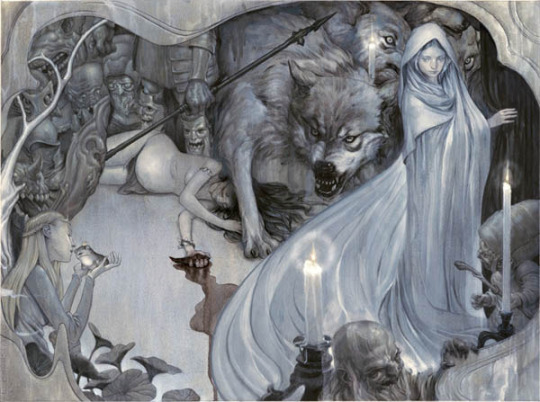
The Adversary and his forces
# The Adversary/The Emperor was designed to evoke the archetypal “evil overlord/dark lord” of epic/high fantasy. To be more precise, he draws a lot of inspiration from Sauron/Morgoth of “The Lord of the Rings”. A tall, dark, gigantic creature of darkness clad in a terrifying armor, whose plan is to conquer by blood and slaughter the entirety of the universe, whose armies are made of all sorts of awful monters (mostly goblins, with some trolls, giants and dragons thrown in the mix), and who enslaves evil sorcerers as top-agents... The reference is pretty obvious.
# The Adversary is also meant to have a devilish symbolism. The monsters creating his armies are noted to have been summoned from hellish dimensions or to be demonic in nature. He is served by sorcerers and witches. His name, the Adversary, can be translated as “Satan” (the Accuser, the Enemy). And in flashbacks he is depicted as a satyr-like entity, with one theory calling him a divine being cast out from heaven - a fallen god, or maybe fallen “angelic” entity.
# The last attack/invasion of the Adversary onto the European Fable-realms, the events of “The Last Castle”, are noted to coincide with the Napoleonian Wars over Europe - meaning the Adversary is also a fairytale version of Napoleon somehow. Though the way the Empire rules its conquered countries through the “illusion of freedom” and “puppet-kings”, the way they exist through a vast bureaucratic system confiscating all magical artefacts and enslaving or killing sorcers, their method of invading/annexing countries to their rule, imposing a strict list of permitted holidays and sending spies in the countries resisting them... It is all meant to evoke the Soviet Union and its Eastern Block during the Cold War.
# The wooden soldiers sent by the Adversary to Fabletown are meant to evoke the “Men in black” from American urban legends/alien tales/ufology. The idea of an army of wooden soldiers created by an humble person that rose up to the rank of great evil is also an accidental parallel with “Urfin Jus and his Wooden Soldiers”, the second book of the “Tales of the Magic Land” series by Alexander Volkov (a Russian rip-off of the Oz books).
# Baba-Yaga, the witch from Slavic folklore and Russian fairytales, is one of the top-agents and “right hands” of the Emperor. She oversees for him the land of the Rus (the Fable equivalent of Russia), and she has alongside her three magical knights - taken from the fairytale “Vasilisa the Beautiful”: Bright-Day the white horseman, rider of the dawn ; Radiant-Sun the red horseman, knight of midday, and Dark-Night the black horseman, rider under the stars. Willinghma noted that if he played into the most horrifying and frightening aspects of Baba Yaga, it was because she was his personal bogeyman and “nightmare monster” as a child. One of the rulers of the Rus lands, while under the Adversary’s control, is Ivan Tsarevich, a recurring character of Russian folktales.
# The leader of the Adversary’s forces against Colonel Bearskin and the Last Keep at the End of the Known World is the Count Aucassin de Beaucaire, from the French medieval story “Aucassin et Nicolette”.
# Chernomor, used to serve under Aucassin de Beaucaire (or alongside him) and became the governor of the “world of Kardan”, one of the frontier-worlds of the Empire. If you go to the Wikipedia article, Chernomor is listed as coming from the poem “Ruslan and Lyudmila” which is partially true - but the Fables Encyclopedia reveals that this version of Chernomor actually comes from the poem/fairytale “The Tale of Tsar Saltan” by Pushkine - in fact, it is this poem that Chernomor reads to himself during his first appearance.
# In quite a twist from his Sauron-like appearance, the heart of the Empire isn’t some Mordor land. In fact, as it turns out the Empire is a vast thriving bureaucratic empire meant to evoke the Roman Empire (or Byzantine Empire, due to the very bureaucratic nature of the management of the empire). The land at the heart of the Empire shares the same name as the Capital City of the Emperor (or Imperial City): Calabri Anagni. This name is made up of “Calabri”, the name of the region of Italy forming the “point of the boot”, and “Anagni”, an ancient town of central Italy. It is indeed the Homeland equivalent of Italy, and in fact the Imperial City was drawn based on the sketches and illustrations of Ancient Rome by Piranesi. Plus, the situation of the Fables living in an “exile” and a “diaspora” because of the Adversary’s conquering Empire is meant to evoke the destruction wrecked by the Roman Empire against the Jews - more specifically the Jewish-Roman Wars.
# Willingham takes some time to explore the life and day-to-day activities of the lower-ranked goblins and soldiers of the Empire, humanizing them in their usual duties (such as tax collecting). I first I thought it was just a reference to a similar thing Tolkien did with his orcs (see “The Return of the King”) but then it clicked when I realized the “day-to-day story from the point of view of lower-ranked members of the evil empire” + the evil empire recruiting and enslaving sorcerers and wizards as its “new nobility” + Willingham’s love for military stories and dark, gory battles... There is definitively here an influence of Glen Cook’s The Black Company. It would make the Adversary influenced by another famous duo of “evil overlords” of fantasy: The Lady and the Dominator.
# Buckingham explained that Ogren and Throk, the goblin duo of issue 36, were inspired by the numerous British humor comics he grew up with as a child.
# The Snow Queen from Hans Christian Andersen’s fairytale of the same name is another one of the “great ladies” and right hands of the Emperor, just like Baba Yaga. In this version of the tale however she seems to be heavily tied to the evil mirror of the tale - she has a mirror above her throne, Buckingham revealed that the fragments of the shattered mirror are ornating her queenly outfit, and it is because of her that Kay ended up with a shard of the mirror in his eyes. Willingham sneaked a “Song of Ice and Fire” reference in the comic as, when she arrives in the Imperial City, the guards keep shouting “Winter is coming!”. Her name, “Lumi”, is the Finnish word for snow. And in the Fables Encyclopedia, Willingham revealed that the reason she became such an evil character in “Fables” is because through her he wanted to evoke a famous fictional character he could not have the rights to: The White Witch of C. S. Lewis’ Narnia.
# The true identity of the Adversary (the Sauron/Morgoth-like Emperor being merely a “puppet”) is revealed to be none other than Gepetto, from “The Adventures of Pinocchio” who, after being enroled in a “benevolent conspiracy” against the megalomania and stupidity of local lords, slowly climbed up the ranks and became corrupted into the machiavelic, bloodthirsty tyrant he is today. In the Encyclopedia, Willingham notably said he wanted to get as far away from the Disney’s version of Gepetto as possible, and return to the character as described by Collodi, as a “cantankerous old grump”. The situation of Gepetto, a little old man behind a fake, artificial all-powerful imperial figure, is also very reminiscent of Oscar Diggs/The Wizard of Oz’s situation from “The Wonderful Wizard of Oz” by L. Frank Baum.
# Gepetto takes his powers from the Blue Fairy that he kidnapped and locked away - the Blue Fairy is Willingham’s strange mixture of the Fairy with the Turquoise Hair, from Collodi’s original tale, the Blue Fairy (Disney’s version of the previous) and the “original” folklore of fairies, aka the “fair folk” of the British Isles: Willingham insists on the fickle, capricious, strange and alien behavior and mindset of the Fairy.
# The other two main agents of the Emperor, beyond Baba-Yaga and the Snow Queen, are the Nome King (a recurring antagonist from L. Frank Baum’s Oz books, now governor of Oz for the Emperor) and Hansel - the boy from “Hansel and Gretel”, who grew up into a witch-hunter and Great Inquisitor. He isn’t just designed after the Puritan witch-hunters of the “witch trials” of America: he actually was a key part of those trials. During his brief time in the Mundane World he participated in almost all of the witch-hunts throughout Europe and America. He did not start them, but he followed the witch madness everywhere it went, and took a key part in the trials and executions of the so-called witches. He is said to have been in France, Germany and Switzerland, with the Würzburg witch trials and the Salem witch trials being explicitely cited (in the latter case he was the one who encouraged the execution of Susannah Martn). Trieste is also said to have been one of the places Hansel dwelled (though I never heard of witch trials in Trieste? But there were so many I can’t possibly know them all...).
# The Snow Queen’s plan to invade Fabletown, relying on four steps being “Pestilence - Fire - Winter - Famine” is of course very reminiscent of the four Horsemen of the Apocalypse in Christian lore - Pestilence/Conquest, War, Famine and Death. The Snow Queen’s plan for an “eternal winter” are explicitely compared to “Fimbul” - aka the Norse winter predicted for Ragnarök. Among the creatures that serves her and that she plans to send in the world, she mentions the “ice giants”, which is actually a term designated a category of creatures in Norse mythology (the rest are however non-specific entities, not exact reference - frostlings, boreal spirits, fire imps...). The sorcer used to illustrate the “Pestilence” part of the plan, Tom Harrow, was actually designed after Neil Gaiman - it was Mark Buckingham’s gift to Gaiman, who had been the best man at his wedding. Finally, of the two fictional diseases the Snow Queen mentions (the Skold brownpox and the Red City Plague), the later seems to be a reference to the “red plague” from “The Masque of the Red Death” by Edgar Allan Poe.
# A last note, taken from the “Fables Encyclopedia”: the armor of Lieutenant Oakheart, a random character among the wooden soldiers of the Empire (seen in issue 52), was actually inspired by the cover of the album “Want One” by Rufus Wainwright.

Magical artefacts:
# The Seven-League Boots, from Charles Perrault’s Little Thumbling, are kept by Fabletown.
# The Vorpal Blade from Lewis Carroll’s “Jabberwocky” poem (and “Alice Through the Looking Glass”) is in possession of Fabletown (and becomes Boy Blue’s weapon later).
# The magic beans, from Jack and the Beanstalk. Jack keeps trying to scam people by pretending he still has them, when in truth he lost them a long time ago. It is revealed in “Happily Ever After” that in truth Fabletown got hold of the last magic beans, which form the only way to reach the Cloud Kingdoms where the giants live.
# Bluebeard keeps a hook in his office - it seems to be the hook of “Captain Hook”, from J.M. Barrie’s Peter Pan.
# Snow-White’s office contains a sword in the stone (from the Arthurian myth), various Arabian oil lamps (a reference to “Aladdin”), as well as several Greco-Roman statues (a copy of the Venus de Milo, statues of Mars and Neptune...).
# The Fairy Witch’s magical barley seeds from which little women are grown are from Andersen’s fairytale “Thumbelina”.
# Bluebeard might have owned “The Portrait of Dorian Gray” - because there is the painted portrait of a man we keep seeing in his castle, that is not him, so...
# The magic mirror of the evil queen from “Snow-White” is kept in Snow-White’s office, as well as the torn of head of the Frankenstein Creature (nicknamed “Frankie”).

The Last Castle one-shot
# The titular “Last Castle”, of its full name the “Last Keep at the End of the Known Worlds”, is actually the castle from the Norwegian fairytale “East of the Sun and West of the Moon”, located by those directions, and beyond the “House of the Four Winds”.
# Little Red Riding Hood is from the fairytale of the same name (the brothers Grimm version, since in her story the wolf was defeated by a woodsman).
# Robin Loxley, or Robin Hood, is from British folklore and English literature. We also see two of his Merry Men: Friar Tuck and Small John.
# Colonel Bearskin is a higher-ranked version of the titular character from the brothers Grimm fairytale “Bearskin”.
# We have two characters from Edmund Spenser’s “The Faerie Queene”: Lady Britomart, the “warrior damsel”, and the Red-Cross Knight (Saint George by another name).
# The twelve crow-brothers are from the Grimm fairytale “The Twelve Brothers”.
# Old Pellinore is a king from the Arthurian legends.
# Tam Lin, the “lover of the fairy queen”, is a character of English folklore and folk-songs (the “Ballad of Tam Lin” is his most famous depictions).
# Herman von Starkenfaust is a character from Washington Irving’s “The Spectre Bridegroom”.
# The Little Tailor that “got seven at one stroke” is from the brothers Grimm’s “The Valiant Little Tailor”.
# The Kings of Madagao and Bornegascar are the rival kings from the piece of Ambrose Bierce “Two Kings”, from his “Fantastic Fables”.
# Beaucaire and Bearskin fought many battles against each other, two of which I got the reference of: the battle of Boxen is an homage to the fictional world created by C. S. Lewis as a child, while the battle of “Oakcourt” is a reference to the legend of wise, fair and just kings holding their courts under an oak. When Blue Boy confronts Chernomor in the beginning of the “Homelands” arc, he also mentions the “battle of Vesteri”, which is apparently the battle told in the poem “Tsar Saltan”, the one where Chernomor appeared with thirty-three warriors (though the events described in the poem are apparently a false retelling of the actual events, which were the invasion of the Adversary’s army, and unlike what the poem claims Chernomor lost the battle).
# Possibles references I am not certain of: Among the refugees at the Last Keep, there is a white-bearded wizard with a pointy hat all dressed in grey, that I think might be an homage to Tolkien’s Gandalf. There is also a solidly built young man with a goat near him that I believe to be “Blockhead Hans” from the brothers Grimm fairytales.

The Homelands:
# The Tin Woodman, Jack Pumpkinhead, The Scarecrow and a Munchkin, all from the Oz books of L. Frank Baum, are seen fleeing the invasion of the Adversary in the “Legends in Exile” flashbacks.
# The flashbacks of “Legends in Exile” also reveal Don Quixote and Pancho (from the novel “Don Quixote”), and a queen on a sleigh pulled by swans - which I believe to be a reference to Andersen’s “The Wild Swans “fairytale.
# The two first conquests of the Adversary (after his “native land”) were “The Emerald Land” (The Land of Oz, invented by L. Frank Baum) and “The Kingdom of the Great Lion” (Narnia, created by C.S. Lewis). We even see an unnamed version of Aslan, killed by the forces of the Adversary.
# The world of the Rus is the Homeland equivalent of Russia, the land where Slavic folktales dwell. It is drawn in the style of Ivan Bilbin (a famous illustrators for fairytales such as “Vasilisa the Beautiful” or “Prince Ivan, the Fire-Bird and the Grey Wolf”). When Boy Blues travels through the Rus lands, he comes upon the “Mice Burying the Cat”, a recurring motif and scene in Russian lubok and folktales.
# In the arc “Arabian Nights (and Days)”, the realm of Karse is name-dropped as one of the lands conquered by the Adversary. Some people think it might be a reference to the kingdom of Karse, from Mercedes Lackey’s books “The Heralds of Valdemar”.
# The Cloud Kingdoms, located in the sky, populated by giants and only reachable through magic beanstalks, is a reference to “Jack and the Beanstalk”. Cinderella calls it mockingly “Cloud Cuckoo Land” - an insult to the absurdity of the kingdom itself, but a subtle literary nod to Aristophanes’ famous play “The Birds”, where Cloud Cuckoo Land is an utopian city in the city. The giant squirrel friend of Cinderella in this realm, Radiskop, is revealed in the Fables Encyclopedia to be Willingham’s version of Ratatosk, the squirrel of the Word-Tree from Norse mythology (the poem “The Saying of Grimnir” is evoked by the Encyclopedia). Cinderella also plays on the expression “castles in the sky” when describing the Cloud Kingdoms - an idiom meaning an unrealistic plan or impossible dream.
# In “The Sons of the Empire”, we follow the side-quest of a group of Fables stealing food from the imperial table: these three Fables are the Gingerbread Man (from “The Gingerbread Man” fairytale), and Mr. Porky Pine with Chicken Ripple (characters actually coming from Neil Diamond’s song “Porkupine Pie”, from the Moods album).
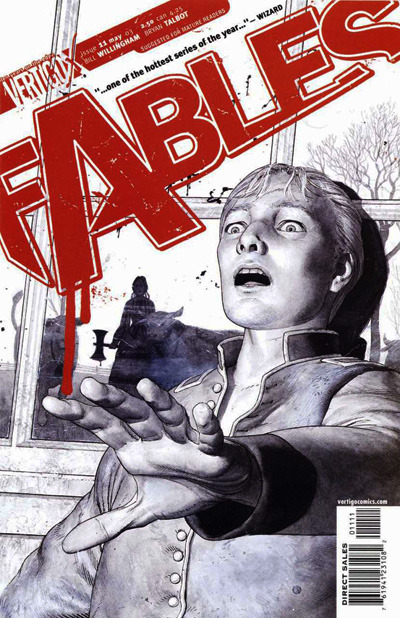
The Great Powers:
# The devil himself appears in “Bag O’Bones” in a “Southern USA folktale” incarnation, as an old, disheveled black man waiting in the bayou to play card games with souls as the final bet - he is called here “Slick Nick”, or “Mr. Nick”, but due to his old-looking appearance, he quickly is called “Old Nick”, a very traditional nickname of the devil in the English language.
# Death, aka the Grim Reaper, appears in “Bag O’bones”.
# The North Wind, father of Bigby, is of course the very embodiment of the North Wind. Personified winds pop up from time to time in fairytales, and the North Wind most notably appears in “East of the Sun and West of the Moon” (a fairytale already referenced by Willingham previously). But “Mr. North”’s depicton as an old man ruling over snow and coldness is also clearly meant to enter into the archetype of “Father Winter/Old Father Winter” or “Father Frost/Grandfather Frost”. Buckingham noted that while he originally drew him inspired by Peter Wyngarde playing Jason King (see the television series Department S/Jason King), he then decided to prefer the way the character was originally drawn by Mark Wheatley in “1001 Nights of Snowfall”, as more “Norse god-looking”.
The servants and affiliated creatures of the North Wind are called after different types of winds: Mistral is a violent wind of southern France, Squall is a sudden or violent gust of wind, Whiff is a puff of air, and the Zephyrs are light breezes.
# The d’jinns are here a very dark reinterpretaton of the djinn of Arabian folklore and fairytale, reinvented as amoral creatures of pure magic that have to be bound for the sake of the entire world. These d’jinns were purposefully designed as dark parodies of the Genie from Disney’s Aladdin: like him they have blue-skin, black hair, and a “tail of smoke” for legs. As per the common legend most carried on by “1001 Nights”, the d’jinns were trapped in magical bottles by “Sulymon the Wise”, aka King Solomon. However, unlike the tradition presented by the “Arabian Nights”, in the Fables world King Solomon co-worked with Daedalus (a genius-inventor of Greek mythology, reinterpreted as the “greatest sorcerer-scientist” of Sulymon’s time) to create the magical bottles. And, Sulymon had to trick the d’jinns into getting inside the bottle, by using the same ruse displayed in the fairytale “The Fisherman and the Jinni”.
# Santa Claus and Mrs. Claus, of the American Christmas lore, exist in the Fables world, and while it is strongly hinted in the main series, the Encyclopedia confirms they are “god-like” entities in the Fables verse, close to the other Great Powers.

The 1001 Nights of Snowfall one-shot
# “Be careful what you wish for” seems to have been loosely inspired by “The Little Mermaid”, or rather forming an ironic inversion of it (especially of the more modern retellings like Disney’s), since it is about a girl wishing to explore the world, and asking a witch to turn her into a mermaid to discover the sea. The Fables Encyclopedia mentions that the girl’s name, Mersley Dotes, is only similar to the song “Mairzy Doats” by pure coincidence.
# The seven dwarfs of the Grimm “Little Snow-White” are present in “The Fencing Lesson”, and their entire system of “being an underground realm digging constantly for ore and gems” is inspired by a very traditional depiction of dwarfs ranging from Norse mythology to Tolkien - the way John Bolton draws them as ugly; misshapen, bald beings with bulbous heads or strangely-proportioned limbs reminds me of the art of Brian Froud.
# In the “Diaspora” story, Snow-White says she bought a magical stone that makes soup - it is another reference to the folktale “Stone Soup”.
# The “Christmas Pies” storyline takes place in the world from which Reynard hails from - a medieval-time valley filled with speaking animals (the setting of the Roman de Renart). I will not name all the characters we see here, but if you know your Roman de Renart, you will recognize several such as Brichemer the deer, Noble the lion, Fière his wife, Grimbert the badger, Couar the hare, etc etc... The legend of “the miracle of the Christmas pies” seems to have been invented by Willingham here - but not out of scratch. If you know your Christmas lore, you know that miracles happening during the “nights of Christmas” are very common, that pies are tied to Christmas in the English tradition, and that magical food or miracle-food in Christmas is also a staple of folklore. An interesting note is that you can see the version of Christmas celebrated in Reynard’s homeworld is not the one celebrated in our world, because they have “Seven Nights of Christmas” - whereas we have the “Twelve Nights”. Filling the pies with stones so that, after eating it, the animals will be too heavy to move is also a recurring motif in folktales and fairytales involving capturing or killing devouring monster or gluttonous animals (most famous of which being the Big Bad Wolf stories).
# Colonel Thunderfoot and the talking rabbits of the “Thrumbly Warrens”, in “A Mother’s Love”, have been revealed by Willingham to have been inspired by the rabbit-society of “Watership Down”.
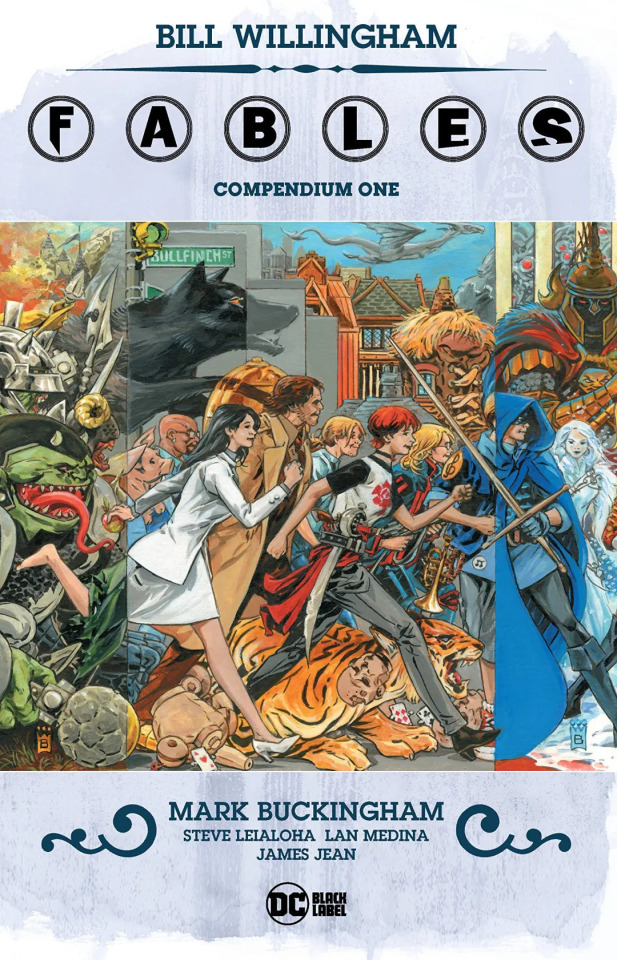
The Arabian Fables:
# The Arabian Fables are clearly all coming from the most famous collection of Arabian fairytales, “One Thousand and One Nights” - they notably have a very common use of flying carpets, items mostly found in this book (and the Arabian legends of king Solomon). They also have manticores - creatures of Greek folklore, but believed to have lived in Persia (another manticore, giant-sized this one, appears in the non-referential world of Skold in “Homelands”).
# In “1001 Nights of Snowfall”, the frame-story is literaly the frame-story of “One Thousand and One Nights”, but with Snow-White taking Scheherazade’s place as the one trying to survive Sultan Shahryar.
# The delegation arriving in Fabletown in “Arabian Nights (and Days)” is centered around Sinbad - the famous Sinbad the sailor whose stories are told in “1001 Nights”. He has two companions which I have yet to identify as references or pure invention - but one, Yusuf, is very clearly the embodiment of the archetype of the “evil vizir” of Arabian tales coupled with the “wicked, scheming sorcerer”. People online have identified him as a possible take on Disney’s character of Jafar from their version of Aladdin, but Buckingham revealed that his design of Yusuf was actually inspired by Doctor Who’s The Master, as played by Robert Delgado.
# Aladdin and Ali Baba, two heroes of the most famous Arabian fairytales, are said to live in the Homeland version of Baghdad, where Sinbad also dwells.
# One of the co-conspirators and allies of Yusuf is Sid Nouman - aka, Sidi Nu’uman from “The Caliph’s Night Adventures” (sub-section “The History of Sidi Nu’uman”). The identity/appearance the d’jinn takes to reach out to him is the one of “The Fair Persian” - one of the two main characters of the 1001 Nights tale “Noureddin and the Fair Persian”.
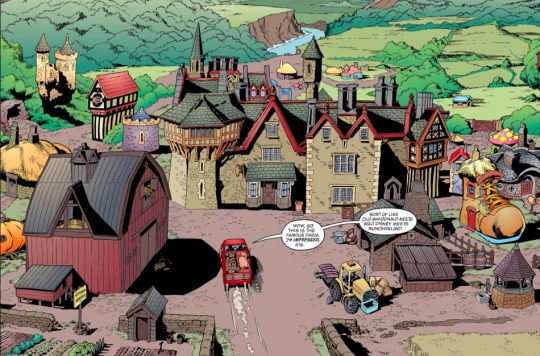
Other things:
# In “Legends in Exile”, Rose-Red forces Bluebeard to keep their engagement secret for a year. This evokes a common trope in fairytales where a character is asked to keep a secret, or a vow of silence, for a given period of time - or where a character has to hide their marriage for a given number of years.
# “A Wolf in the Fold” reveals that, when Bigby first arrived in the human world, he stayed in the 17th century Carpathians, and became friend with a certain “undead count” - yes, Count Dracula, from Bram Stoker’s novel.
# Before Willingham decided to have the European Fables be Christian in religion, he seems to have considered a more fantasy-like religion for them, as the chapel seen in the Knights of Malta Hospital in “Animal Farm” doesn’t have any religious imagery. Instead, its stained glass depicts fabulous beasts: a dragon, a unicorn, an hydra and a phoenix.
# The desk of Grimble has two books inside of it which are references. One is titled “Shreck!”, a nod to the Shrek movies, while the other is literaly titled “Troll Bridge by Neil Gaiman”, a reference to Gaiman’s reinterpretation of “The Three Billy Goats Gruff” fairytale.
# During Bag O’Bones, Jack (as a Confederate soldier just out of the Civil War) sings the minstrel song “Gwine Run All Night”, aka “De Camptown Races”.
# At one point, the trio formed by Flycatcher, Boy Blue and Pinocchio go buy a series of Fabletown-produced comics, which are all parodies of actual super-hero titles. The Uncanny Oz Men are “The Uncanny X-Men” for example, the Fairytale Four are the “Fantastic Four”, the Tin Man is “Iron Man”, and the Stalk Thing is the “Swamp Thing”. “Red Hood - Little Riding Returns” might be a reference to “The Dark Knight Returns”, while the Un-Mundy... Maybe it is “Superman”?
# When John Barleycorn explores one of the Emperor’s towers, where stolen magical items are kept, we can see the head of Baphomet sculpted on a disc. During the same quest, the other Lilliputians left behind believe that John must be with “some elf-king’s daughter” by now: this is a reference to Lord Dunsany’s “The Elf-King’s Daughter”. Finally, as John Barleycorn goes searching for the old cottage of the Fairy Witch, he orders his mount to go “Straight ‘til morning” - a sentence lifted from “Peter Pan”.
# Kevin Thorn is compared by his colleagues to agent Mulder, from the show “X-Files”, due to being the only Mundane immune to the Fables “do not notice us” spells.
# During the “War Stories”, the project of the Nazi scientists couple two references: on one side it is named Volsüng (after a character of Norse mythology, tied to the Volsunga Saga), on the other the topic of mass-producing artificial soldiers raises the fear of it being too similar to the golem of Jewish folktales.
# In-universe, Jack took an opportunity out of the great hype surrounding fantasy movies caused by the (then still new) release of the “Lord of the Rings” movie trilogy - in turn, he himself plans to do a “better” version of them, centered around his own tales.
# The Witching Cloak does not come from a precise story, but gathers various elements and powers usually attributed to magical cloaks and capes. For example, its powers of invisibility are similar to the Germanic tarnkappe of Siegfried, while its teleportation powers can remind of the flying cloak of feathers of Freyja in Norse mythology, and its invulnerability can evoke Herakles’ famous Nemean Lion pelt. In a similar way, the Witching Well (which is the Fabletown equivalent of a cemetery AND afterlife) is not coming from a precise story, but is born of a general rule and belief in the world of fairytales and folktales that wells are gateways to the otherworld and the dwelling of supernatural beings - as well as closely associated to death and the afterlife. One famous fairytale that has a well perceived by theoricians as a gateway to the afterlife is the brothers Grimm “Frau Holle”.
# Willingham loves to play around with the topic of numbers in fairytales. For example, Bigby was one of seven brothers, tried to kill his father seven times, and himself has seven children. Meanwhile, when Cinderella has to fulfill a mission in the Cloud Kingdoms, everybody involved in it forces her to wait three days for her services - much to her annoyance as she wonders exactly WHY everybody asks for three days.
# In “The Sons of the Empire”, an annoyed Prince Charming calls ironically the Beast “Gunga Din”, after the character from Rudyard Kiplng’s poem (later adapted into a movie).
# In “Jiminy Christmas”/“Father and Son”, the children of Bigby mention numerous fictional equivalents of cartoons and toys - but one in particular was talked about in “Fables Encyclopedia”, “Ranger Danger”, aka “Ranger Mike Danger”, that Willingham explained to have been the Fables equivalent of real-world G.I. Joe or Action Man.
# As a last note: the original plans of Willingham for the Adversary’s identity and origin story was to have him be Peter Pan. This is why the descriptions of the Adversary in “Legends in Exile” are so strange in retrospective: he is described as “wood sprite” that became something much more bigger or dangerous, or a fallen god cast away from divine realms, while being depicted in the flashback as a satyr-like being - it all points out to Pan of Greek mythology. Couple this with the fact the Adversary was said to come from “beyond the shores of Never”, aka Never Land, and you understand it is Peter Pan. Willingham’s plan was to have an evil, corrupted, demented version of Peter Pan that wanted to expand his Neverland/playing ground to all the worlds nearby, hence the creation of the Empire. The same way Peter Pan would have been the “big bad”, Captain Hook was also supposed to appear as a heroic figure fighting the Adversary - he notably would have had a plotline about saving the Lost Boys, who as it turns out are an army of children Peter Pan stolen away from the worlds he visited and conquered. However Willingham discovered that the characters were not in the public domain at the time, still under copyright, and so he had to change his plans - limiting himself to having them depicted in battle in the front page of “1001 Nights of Snowfall”.
#fables#fables comic#fairytale comics#bill willingham#mark buckingham#fairy tales#fairytales#nursery rhymes#grimm fairytales#andersen fairytales#perrault fairytales#norwegian fairytales#french fairytales#literature#fantasy#poetry#One Thousand and One Nights#russian fairytales#russian folktales#folktales#fairytale archetypes#fairy tale archetypes#references#the fables catalogue#neil gaiman
13 notes
·
View notes
Text
oops det er på norsk i kveld


Einarr sitter og broderer noen blåbær :>


Morten: heiiii - å ja selvfølgelig kan eg komma på jobb! null problem haha, eg bara forsov meg litt igjen-
Morten: ...det e morgen akkurat nå. korfor tok eg denna gartnerjobben nå igjen?
Bat: fordi du like blomster, din tosk.
Morten: vel... sant, men hysj.

Morten: .............


I mellomtiden satte Rune i gang med å spille litt gitar.


Rune: Okei, så siden Morten ble tvungen til å gå på jobb igjen, tenker eg at hen fortjener en koselig overraskelse då an kommer hjem. Har du forslag?
Einarr: Ek veit hvat vér kann gjera.

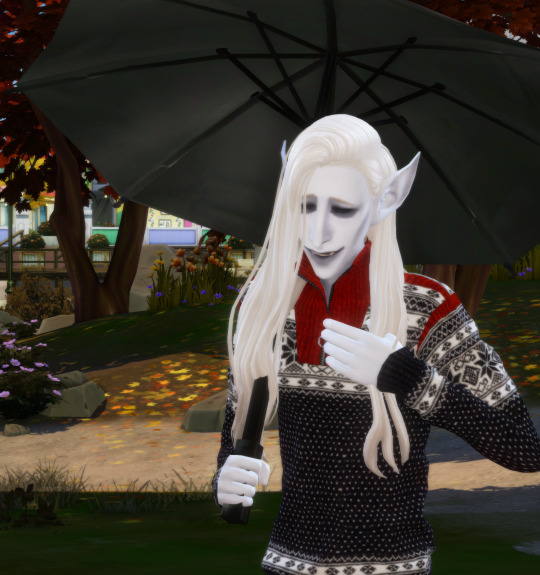
Maria-Elise, Mortens mor: Overnatting hos dokkår? Tja, korfor ikkje?
Einarr: Tǫkk fyrir. Ek trúr Mortinn setjar mjǫk pris á þat.
Maria-Elise: Eg glømme alltid kor tjukk den merkelige dialekten din e...
Einarr: Já; ek em mjǫk gamall, þú veit...
Maria: Eldgammal vikingmann, ja.

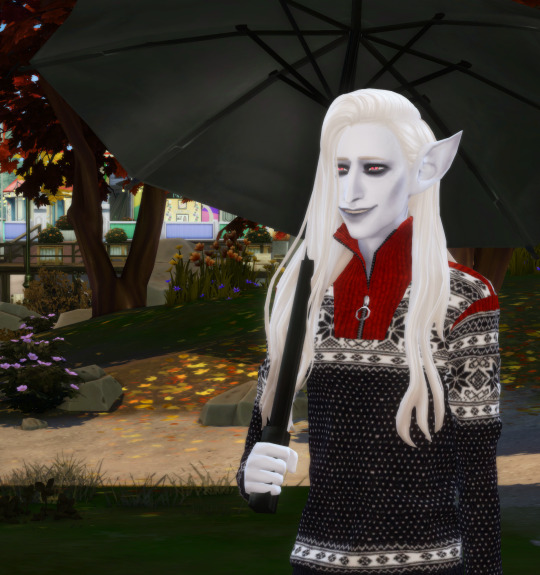
Maria: Vel, eg har'kje særlig møkje å gjøra dei neste tri dagane, så...
Einarr: Þrir dagar yfirnǫtting segirþú?
Maria: Gjerna det.
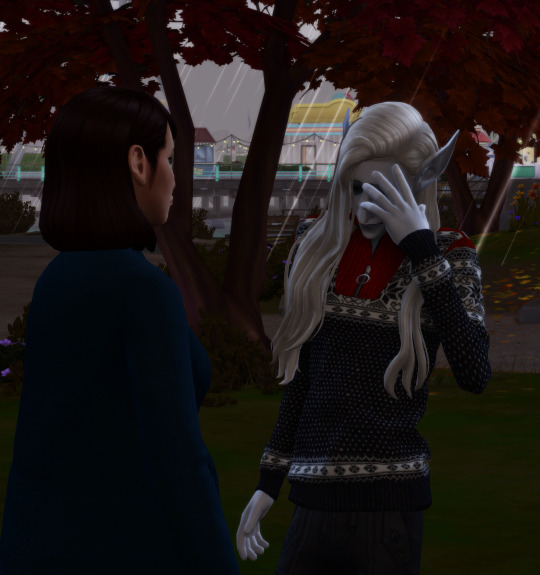

Og så kom regnet.
(fortsettelse følger??)
#speak your language day#yes it's past midnight here but i wanted to do this and it's still may 7th somewhere right#also doubles as a reshade test post i guess ghdfjg guess what i finally got installed#tales from the oc savefile#gameplay extras#yeah einarr is speaking some weird mix of old norse and modern norwegian don't worry about it he's ancient#also yeah. for dialog i'm also doing dialects so excuse me LMAO i'm so sorry. your translators will probably throw a fit#also why didn't i use the Chat formatting sooner kfdgjh#i think i'll format my regular story posts like that too from now on#it just works too well
9 notes
·
View notes
Text

EAST OF THE SUN & WEST OF THE MOON retold and illustrated by Lazlo Gal. (Toronto: McClelland & Stewart, 1993).



source
#beautiful books#book blog#books books books#book cover#books#illustrated book#children’s book#fairy tales#norwegian#east of the sun west of the moon
79 notes
·
View notes